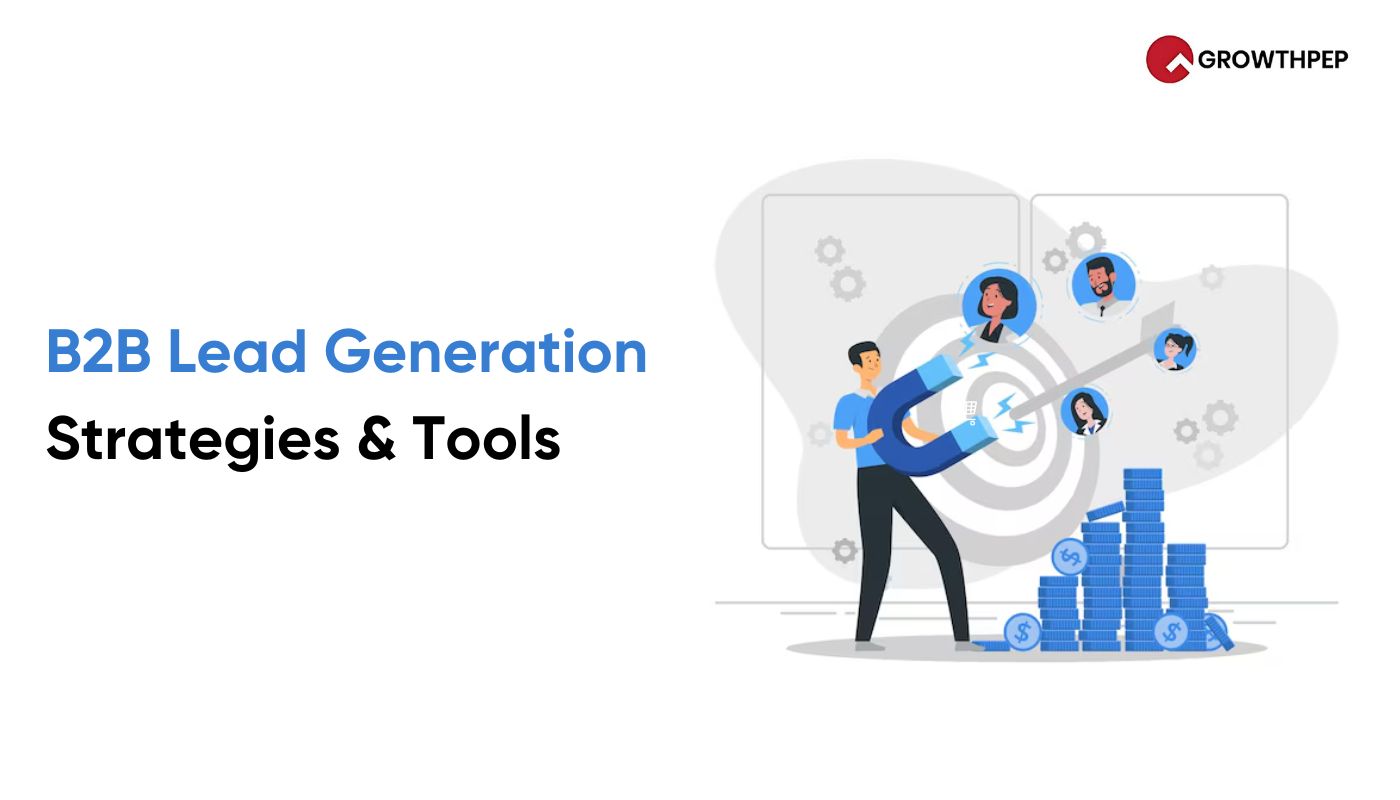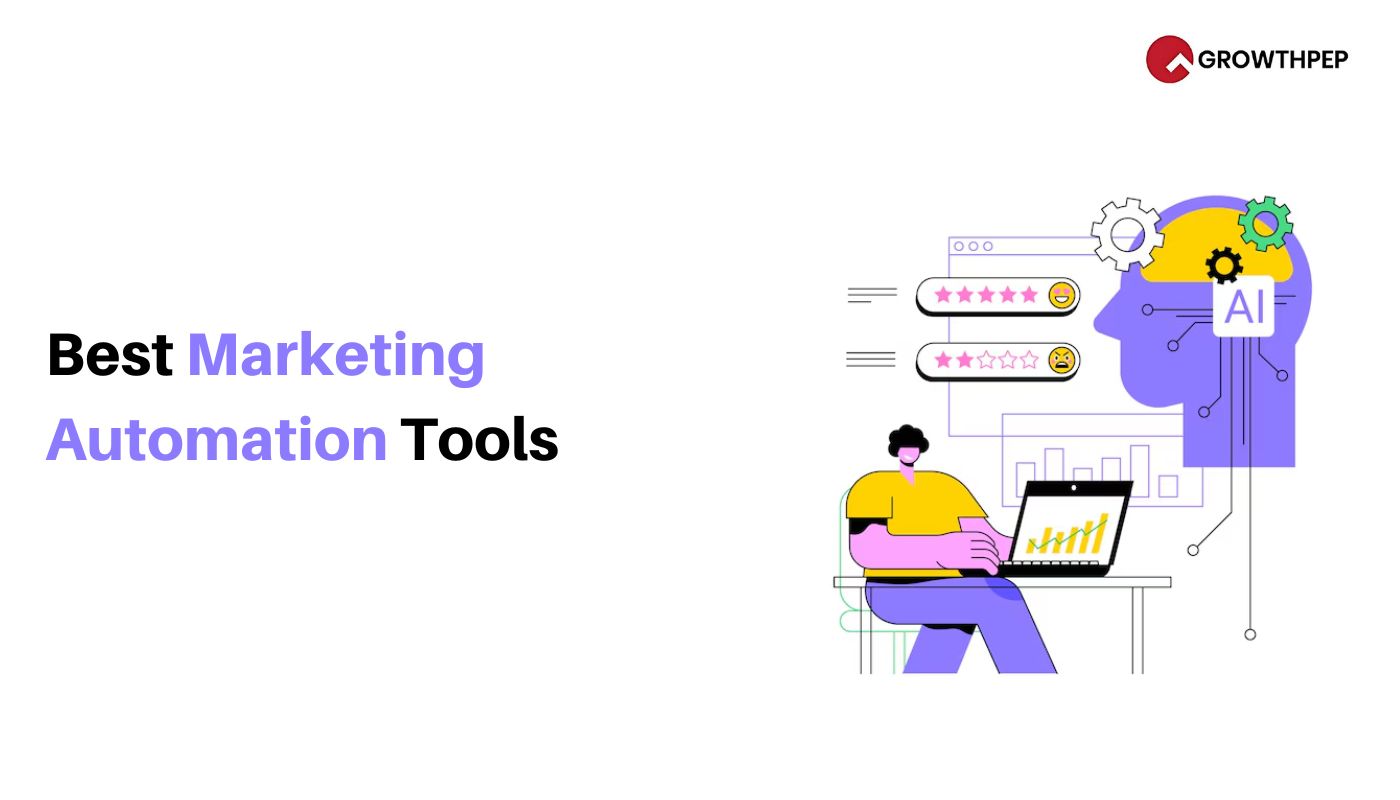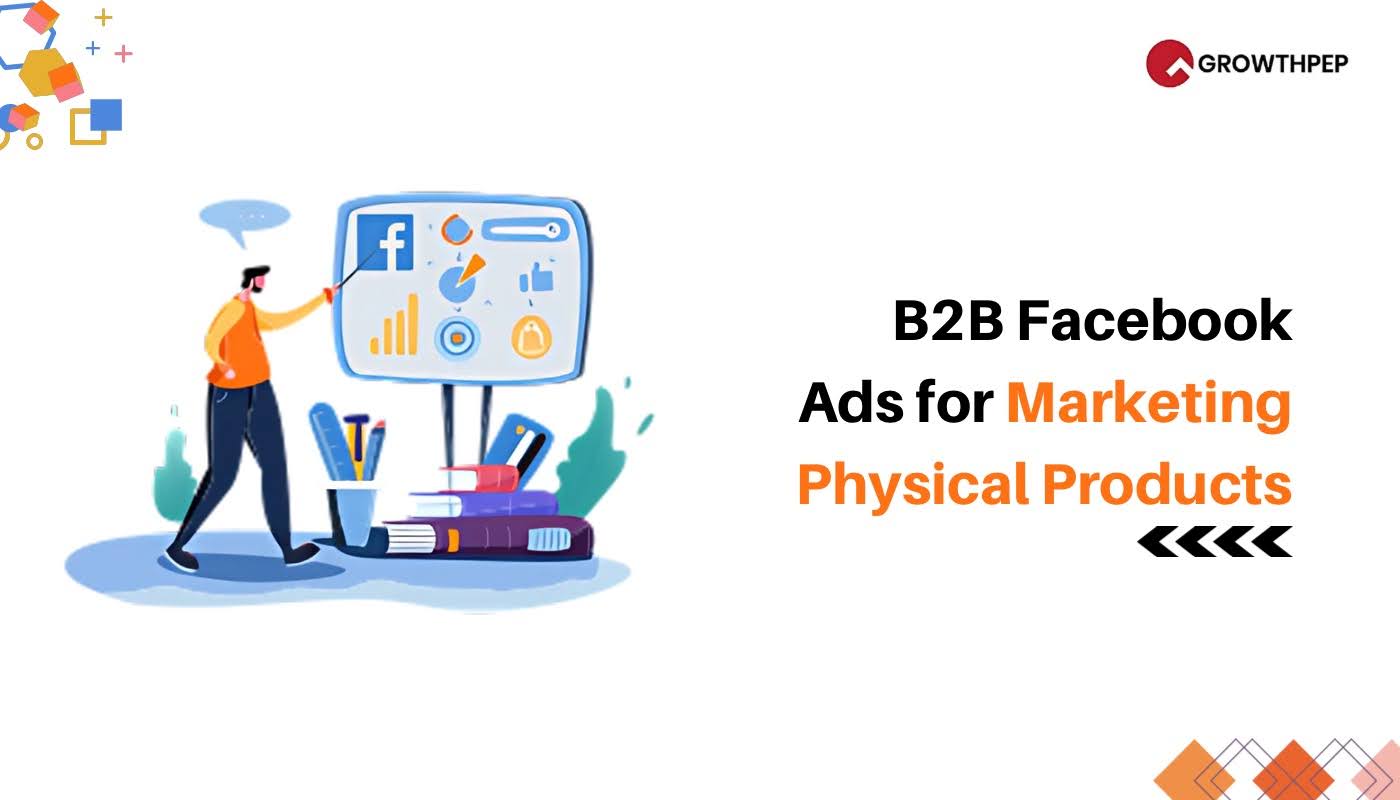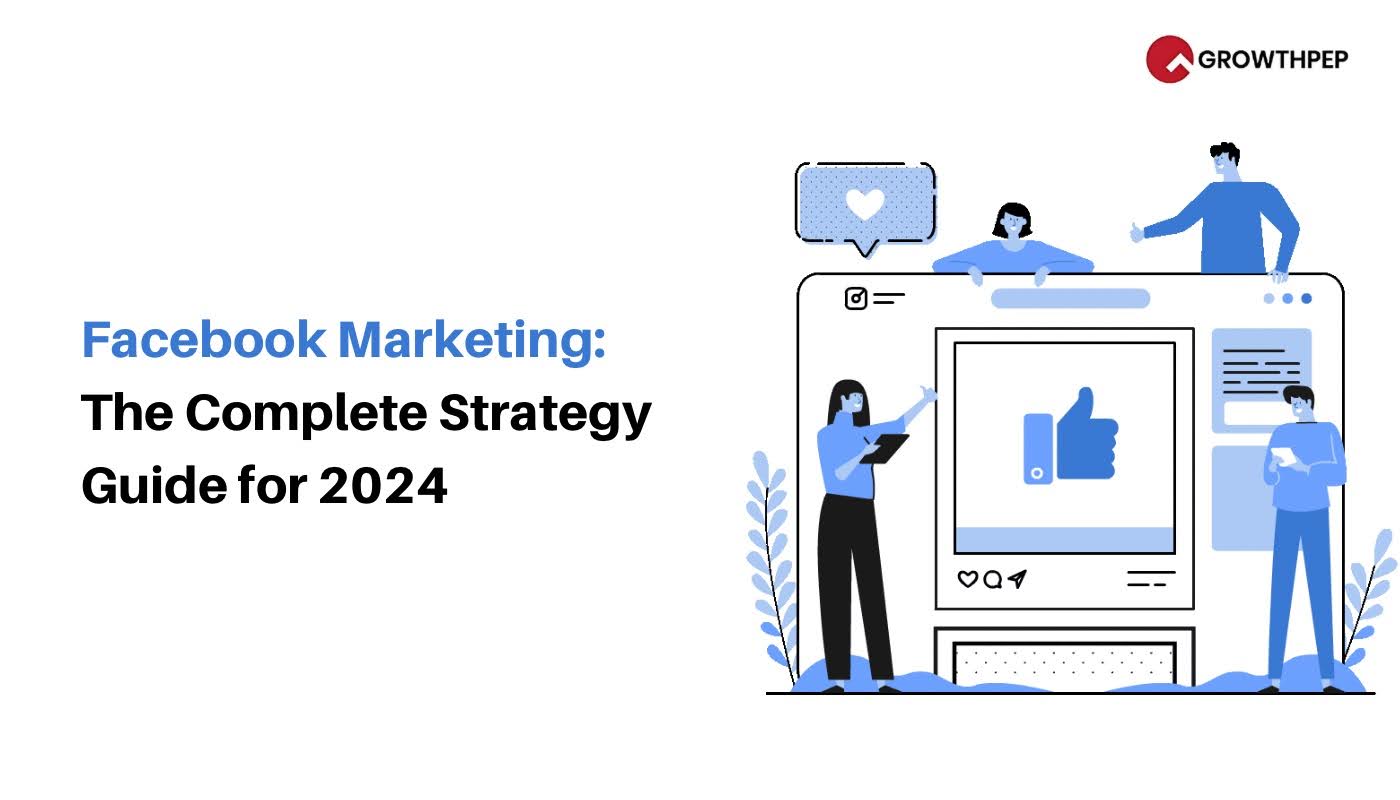B2B Lead Generation Strategies and Tools
Are your lead generation efforts more effective than a snowman in the desert? Well, dive in because we’re about to turn that around!
Business-to-business (B2B) lead generation is no joke. Effective lead generation is crucial for B2B companies aiming to grow and thrive.
According to recent statistics, 93% of B2B buying processes begin with an online search, highlighting the importance of a robust digital presence and strategic marketing efforts. As businesses increasingly turn to digital channels, implementing effective lead generation strategies has become essential. From using content marketing and social media to utilising advanced tools and technologies, we have countless options to attract and nurture potential leads.
This blog will explore various B2B lead generation strategies and tools to help you connect with your target audience and convert prospects into loyal customers.
What is B2B Lead Generation
B2B lead generation refers to identifying and attracting potential business customers rather than individual consumers. This process is critical for companies whose primary clientele consists of other businesses.
Lead generation involves collecting information about prospects, such as their names, emails, company names, and job titles. This information is used to create targeted sales pitches or marketing campaigns to convert leads into paying customers. The lead generation process is often the first step in a broader marketing strategy, serving as a critical link between marketing efforts and the sales team.
B2B lead generation differs from B2C in several key areas, including longer sales cycles, building relationships with multiple decision-makers, and a more complex buying process that factors in budgets, regulations, and long-term benefits. While B2C often relies on emotional appeals and quicker sales, B2B requires more tailored strategies to address businesses’ complexities and decision-making processes. Understanding these differences is crucial for crafting effective lead generation strategies.
Importance for Sales and Marketing Teams
B2B lead generation is crucial as it lays the groundwork for all marketing strategies. It is essential for:
- Foundation for Strategies: B2B lead generation is crucial as it lays the groundwork for all marketing strategies.
- Steady Stream of Leads: A well-defined lead generation strategy ensures the sales team has a continuous influx of qualified leads.
- Improved Sales Performance: Access to qualified leads can significantly enhance sales performance.
- Alignment of Efforts: Effective lead generation helps align marketing and sales teams toward common goals.
- Resource Efficiency: It ensures that both teams utilise resources efficiently to convert leads.
- Pipeline Filling: A robust lead generation process may allow you to fill your pipelines with qualified leads, which can impact sales and revenue.
What are the Traditional and Non-Traditional Lead Generation Channels
Regarding lead generation, B2B companies can leverage traditional and non-traditional channels to find the best sources of potential leads.
Traditional Lead Generation Channels: Traditional methods have been staples in the B2B landscape for years. These include:
- Cold Calling: Directly reaching out to potential leads over the phone.
- Networking Events: Attending industry conferences, trade shows, and local meetups to connect with prospects.
- Direct Mail: Sending promotional materials through the postal service to reach potential customers.
- Referrals: Using existing customers to refer to new business.
While these methods can still be effective, they often yield varying results compared to modern approaches.
Non-Traditional Lead Generation Channels: Today’s digital marketplace offers innovative strategies that can reach leads more effectively. Non-traditional channels include:
- Social Media: Engaging with potential leads through LinkedIn, Twitter, and Facebook platforms.
- Content Marketing: Creating valuable content (blogs, videos, infographics) that attracts and nurtures leads.
- Webinars: Hosting informative sessions that allow for direct interaction with potential clients.
- Targeted Email Campaigns: Send personalised emails to specific audience segments based on their interests and behaviours.
Now let’s dive into understanding the different types of B2B leads—because not all leads are created equal, right?
Also Read: Digital Marketing Strategies for Ecommerce: Tips and Examples
Different Types of B2B Leads
Understanding the different types of B2B leads is essential for developing an effective lead generation strategy. Not all leads are created equal, and categorising them helps you tailor your approaches based on the lead’s stage in the buyer’s journey.
The two primary types of B2B leads are Marketing-Qualified Leads (MQLs) and Sales-Qualified Leads (SQLs). By distinguishing between these categories, you can prioritise your efforts and ensure that resources are allocated efficiently to convert leads into customers.
Here are the two main types of B2B leads:
- Marketing-Qualified Leads (MQLs):
- MQLs are leads that have shown interest in your product or service through engagement with marketing efforts.
- They typically engage with content, such as downloading a whitepaper, signing up for a webinar, or filling out a contact form.
- MQLs still need to be ready to purchase but indicate higher interest than other leads.
- The marketing team nurtures MQLs through targeted content and campaigns to move them further down the sales funnel.
- Sales-Qualified Leads (SQLs):
- SQLs are leads that have been vetted and are deemed ready for direct sales engagement.
- They have demonstrated a solid intent to purchase and often meet specific criteria set by the sales team.
- SQLs typically converse with sales representatives, requesting demos or pricing information.
- At this stage, the sales team focuses on closing the deal and converting these leads into customers.
Understanding these leads allows organisations to implement targeted strategies for nurturing and converting them, ultimately driving sales growth and improving overall lead generation efforts.
Now that we know the types of leads let’s also understand why B2B lead generation is essential.
Also Read: Guide to Generating Leads With Facebook Ads
Why B2B Lead Generation is Important
B2B lead generation is fundamental to any successful business strategy, especially in business-to-business sales. Here are several vital reasons highlighting the importance of effective B2B lead generation:
- Identify Ideal Customers
Effective lead generation helps you identify your ideal customers by gathering data on prospects and analysing their behaviours and preferences. This insight allows you to refine your targeting strategies and focus your marketing efforts on high-potential leads, increasing the chances of conversion. Based on this data, you can tailor your outreach to attract similar clients by defining customer personas.
- Guide Content Creation
Understanding the types of leads and their needs enables you to create tailored content that addresses specific pain points. Aligning content creation with the interests and challenges of your audience significantly increases engagement. This targeted approach helps build trust with potential customers, ultimately driving them further down the sales funnel.
- Build Brand Awareness
A robust lead generation strategy drives sales and enhances brand awareness. Consistently engaging with prospects through various channels and providing valuable content positions your company as a thought leader. This fosters trust and credibility among potential customers, making them more likely to consider your products or services when they purchase.
- Improve Marketing Strategies
Analysing lead generation efforts can refine your marketing strategies. By measuring the effectiveness of various channels and tactics, you can make data-driven decisions to optimise your marketing efforts. This iterative process ensures that marketing strategies remain effective and aligned with customer needs, allowing businesses to adapt to changing market dynamics.
- Increase Conversion Rates
By focusing on qualified leads, you can significantly improve your conversion rates. Targeting leads who are already interested in the product or service means more time spent on unqualified prospects and a higher likelihood of turning leads into paying customers. This strategic focus boosts sales and enhances overall business efficiency, allowing teams to prioritise efforts that yield the best results.
Effective B2B lead generation is essential for identifying ideal customers, guiding content creation, building brand awareness, improving marketing strategies, and ultimately increasing conversion rates. These elements work together to create a robust framework that supports business growth and success.
That about covers why lead generation is vital—now, let’s break down the actual process step by step.
Also Read: Performance Marketing Strategies in e-commerce 2024
What is the process for B2B lead generation?
The B2B lead generation process is a systematic approach designed to identify, attract, and convert potential customers into qualified leads. This process is essential for creating a steady pipeline of prospects with which sales teams can engage, ultimately leading to increased sales and revenue. A well-defined lead generation process enhances collaboration between marketing and sales teams and ensures that every stage of the buyer’s journey is effectively addressed.
Here’s a breakdown of the critical steps involved in the B2B lead generation process:
Step 1: Identifying Your Ideal Buyer
The first step in the lead generation process involves defining the characteristics of your ideal buyer. This includes understanding their demographics, job titles, industries, and pain points. By creating detailed buyer personas, you can tailor your marketing efforts to attract leads that fit your ideal customer profile, ensuring a more targeted and efficient approach to lead generation.
Step 2: Choosing Strategy
Once you’ve identified your ideal buyer, the next step is to choose the appropriate lead generation strategies. This could involve traditional methods, such as cold calling and networking, alongside modern digital tactics like content marketing, social media engagement, and email campaigns. Selecting the proper channels and tactics ensures that your efforts reach potential leads effectively and resonate with their needs.
Step 3: Qualifying and Prospecting
After attracting leads, qualifying them based on their likelihood of converting into customers is crucial. This involves assessing their interest in and fit with your product or service. Implementing a lead scoring system can help prioritise leads based on specific criteria, such as engagement level and company size. This qualification process ensures that sales teams focus on the most promising prospects.
Step 4: Closing Leads by Making a Sale
The final step in the lead generation process is to convert qualified leads into customers. This involves engaging leads through personalised outreach, addressing their needs, and guiding them through sales. Building solid relationships during this stage is critical, as it leads to immediate sales and fosters long-term customer loyalty and potential upsell opportunities.
The B2B lead generation process is a comprehensive framework that allows businesses to attract and convert prospects into customers systematically. Following these key steps can enhance your lead-generation efforts and drive sales growth.
Next up, let’s get into some tried-and-tested strategies that could drastically improve your lead generation game.
Also Read: Strategies for Lead Generation in Digital Marketing
Proven B2B Lead Generation Strategies
Generating high-quality leads is essential for sustained growth and success. You may face unique challenges in reaching your target audience and converting leads into loyal customers. It’s crucial to employ proven lead-generation strategies that attract potential clients and nurture them throughout the sales funnel. By understanding your target market and using the right tools and techniques, businesses can create a robust lead generation framework that drives engagement and maximises conversion rates.
Industry leaders tested and refined the following strategies, making them practical for any B2B organisation looking to enhance its lead-generation efforts.
- Ongoing Content Campaigns
Creating consistent and high-quality content is essential for attracting potential leads. Ongoing content campaigns involve developing a calendar that outlines regular publication schedules for various formats, such as blog posts, whitepapers, eBooks, and webinars. For example, HubSpot regularly publishes a series of educational blog posts and webinars that engage their audience and provide valuable insights into marketing strategies. This approach keeps the audience engaged and nurtures them through their buying journey by offering solutions to their problems.
Utilising SEO best practices ensures the content is discoverable, while social media and email marketing promotion maximises reach. Regularly updating content also positions brands as thought leaders, as seen with companies like Moz, which frequently refreshes its SEO guides and resources.
- A/B Testing
A/B testing systematically compares two versions of a marketing asset to determine which one performs better. For instance, you might conduct A/B testing on your email campaigns by varying subject lines to see which generates higher open rates. In one case, Superside tested two different landing page designs—one with a vibrant background and another with a more subdued palette—and found that the lively design significantly increased conversions by 25%. Marketers can gain insights into what resonates most with their audience by analysing user engagement metrics such as click-through rates (CTR) and conversion rates. Continuous testing based on actual user data enhances marketing effectiveness and improves ROI.
- Collect Buyer Reviews
Buyer reviews and testimonials are powerful tools for building trust and credibility. For example, Amazon prominently displays customer reviews on product pages, significantly influencing potential buyers’ decisions. Encouraging existing clients to share their experiences through website reviews, social media, and third-party platforms can enhance credibility. A notable instance is Airbnb’s showcase of user testimonials in its marketing materials to build trust among new users. Additionally, creating video testimonials can provide more engaging content that highlights real customer success stories.
- Get Survey Results
Conducting surveys is an effective way to gather insights directly from your audience. For example, Starbucks frequently conducts customer surveys to understand preferences regarding new product offerings. Businesses can better understand customer needs and pain points by asking targeted questions. Analysing these survey results allows you to create tailored content and offers that address the specific concerns of your target market. For instance, Qualtrics uses surveys to gather feedback on customer experiences, which informs their product development and marketing strategies.
- Use Case Studies
Case studies are detailed accounts of how products or services have positively impacted clients. A well-crafted case study includes a problem statement, the solution provided, and quantifiable results. For example, Salesforce publishes case studies demonstrating how their CRM solutions have helped businesses improve efficiency and revenue. These case studies are distributed through websites, email newsletters, and social media channels to showcase expertise and the value provided to clients. By highlighting real-world applications of your services, you can persuade potential leads to consider your solutions more seriously.
- Optimise Landing Pages
Landing pages are critical for converting visitors into leads. For example, Dropbox effectively utilises minimalist design on its landing pages, which feature clear messaging and a strong call-to-action (CTA) that encourages users to sign up. Their landing page includes only essential elements, focusing visitors’ attention on the primary action they want them to take, leading to high conversion rates. Additionally, Starbucks employs contrasting colors and compelling CTAs on its landing pages, making it easy for users to understand their offers and take action. Regular A/B testing of different landing page elements can enhance performance by providing insights into what drives conversions.
- Personalise Web Content
Personalisation enhances user experience by tailoring web content to specific audience segments. A notable example is Amazon, which uses data analytics to recommend products based on users’ previous purchases and browsing behavior. This dynamic content approach ensures visitors receive relevant information that resonates with your needs, significantly improving engagement rates. Another example is Netflix, which personalises its homepage for each user by showcasing shows and movies aligned with their viewing history. This leads to higher conversion rates as users are more likely to engage with content that interests them.
- Social Selling
Social selling uses social media platforms to build relationships with potential leads. For instance, LinkedIn has become a powerful tool for B2B professionals; many companies use it to share valuable content and engage in industry discussions. HubSpot effectively utilises LinkedIn by sharing insights from its marketing blog and participating in relevant groups, positioning itself as a knowledgeable resource in inbound marketing. This engagement fosters trust and credibility, ultimately leading to sales opportunities.
- Video Content
Video content is increasingly popular for enhancing lead generation efforts. Dollar Shave Club famously launched a viral humorous video, clearly explaining their subscription service while entertaining viewers. This approach not only captured attention but also conveyed complex information effectively. Additionally, companies like Wistia create informative explainer videos about their products, which they share on their website and social media platforms like YouTube, significantly broadening their audience reach.
- Optimise SEO
Search engine optimisation (SEO) drives organic traffic to websites. A prime example is Moz, which consistently conducts thorough keyword research and optimises its blog content around these keywords. By aligning website content with relevant search terms, Moz improves its visibility in search engine results, attracting more potential leads. Furthermore, Backlinko emphasises the importance of building quality backlinks from reputable sites; this strategy enhances domain authority and drives traffic to landing pages, ultimately increasing conversion opportunities.
- Encourage Subscriptions
Building a subscriber list is a valuable lead-generation strategy. For example, HubSpot offers a variety of lead magnets, such as eBooks and whitepapers, to entice visitors to provide their contact information in exchange for exclusive content. Once they have a user’s details, HubSpot nurtures these leads through targeted email campaigns that offer valuable insights and promote their products or services. Another notable example is Copyblogger, which offers subscribers a free content marketing course, demonstrating their expertise while growing their email list. Encouraging visitors to subscribe to newsletters, blogs, or content updates effectively captures leads and nurtures them through the sales funnel.
- Mobile Optimisation
With increasing users accessing content via mobile devices, ensuring websites and marketing materials are mobile-friendly is crucial. Airbnb has optimised its platform for mobile viewing, using responsive design and intuitive navigation, which enhances user engagement and reduces bounce rates. This seamless mobile experience ultimately leads to higher conversion rates from mobile traffic. Another example is Uber, which has designed its app with a clean interface and straightforward functionality, making it easy for users to request rides on the go. By prioritising mobile optimisation, companies can provide a positive user experience and capitalise on the growing mobile market.
- Ask for Referrals
Word-of-mouth referrals are a powerful lead-generation tool. Dropbox successfully implemented a referral program that rewards users for inviting their friends to the platform, leading to rapid growth in their user base. Dropbox expanded its reach by incentivising referrals with additional storage space and built a community of loyal customers who advocated for the brand. Another example is Airbnb, which encourages hosts to refer their friends by offering a credit for each successful referral. Asking satisfied customers for referrals and implementing a referral program can generate new leads and build brand loyalty.
- Utilise Expert Guests
Bringing in industry experts for guest blogs, webinars, or podcasts can expand reach and enhance credibility. Moz frequently collaborates with well-known figures in the SEO industry for their Whiteboard Friday series, attracting a wider audience to their brand. These expert guests provide valuable insights and knowledge that enrich Moz’s content, making it more appealing to their audience. Another example is Hubspot’s Marketing Podcast, which features interviews with marketing leaders, providing listeners with actionable advice and expanding Hubspot’s reach to new potential customers. Promoting these collaborations through marketing channels maximises visibility and generates new leads.
- Organise Lead Gathering
Hosting events such as webinars, workshops, or conferences provides opportunities for direct engagement with potential customers. Salesforce regularly hosts its annual Dreamforce conference, which attracts thousands of attendees and showcases the company’s expertise in CRM solutions. These events allow Salesforce to capture contact information for follow-up and nurture leads through the sales funnel. Another example is Hubspot’s INBOUND conference, which features keynote speakers, educational sessions, and networking opportunities, attracting marketing and sales professionals worldwide. Following events, companies should ensure they follow up with participants, providing additional resources and nurturing them through the sales funnel.
That was a big chunk of strategies to digest—don’t worry; we’re moving on to tools that can make your life a lot easier.
Also Read: Top 6 Tools for Search Engine Marketing in 2024
Essential B2B Lead Generation Tools
Any sales representative will tell you you will generate more sales if you dedicate more time to the process. We realise this is a fantastic discovery.
Regretfully, representatives frequently become entangled in a maze of progressively laborious manual activities. Studies reveal they barely dedicate 28% of their weekly time to sales. Most of their working hours are consumed by emails, meetings, data entry, and prospecting leads. Reps can spend more time closing leads by automating repetitive chores with the correct B2B lead creation platform.
Even if there are a ton of sales tools available, the following are the fundamental necessities to strengthen the overall B2B lead creation process:
1. Leadfeeder
Leadfeeder is a powerful tool that helps businesses identify companies visiting their websites, allowing for targeted outreach efforts. By tracking visitor behaviour, businesses can gain valuable insights into companies’ interests in their products or services. For example, a B2B service provider can use Leadfeeder to follow up with leads interested in specific service pages, increasing the likelihood of conversion. By focusing on companies already familiar with your brand, you can optimise your outreach strategy and generate high-quality leads more efficiently.
2. HubSpot Sales Hub
HubSpot Sales Hub is a comprehensive platform that streamlines lead management, sales processes, and marketing automation. It offers tools for tracking interactions, managing pipelines, and nurturing leads effectively. For example, you can automate follow-up emails based on user interactions, ensuring no lead goes cold. This level of organisation helps sales teams prioritise their efforts and focus on the most promising leads. With robust analytics and reporting features, HubSpot also allows businesses to track performance metrics, enabling continuous improvement in lead generation strategies.
3. Reply.io
Reply.io is an automation tool designed to streamline outreach efforts and enhance follow-up processes for sales teams. It allows users to create multi-channel outreach campaigns, automating tasks while personalising interactions. For instance, a sales team can set up a sequence of emails, calls, and social media interactions to nurture leads effectively. By using analytics, teams can measure engagement and adjust their strategies accordingly. This efficiency enables companies to reach more prospects while maintaining a personalised touch, ultimately increasing the chances of conversion and improving lead generation outcomes.
4. Google Analytics
Google Analytics is a powerful tool for tracking website performance and user behavior, providing valuable insights into lead generation efforts. Businesses can analyze traffic sources, user engagement, and conversion rates to understand how visitors interact with their site. For example, a company might discover that a specific blog post drives significant traffic, prompting them to create more content around that topic. By using this data, businesses can optimise their marketing strategies, ensuring they focus on the channels and content that generate the most leads, leading to improved ROI.
5. ZoomInfo
ZoomInfo is a robust platform that provides access to a vast contact information and company insights database. Businesses can use ZoomInfo to identify potential leads and gather crucial data about their target audience. For instance, a sales team can create highly targeted lists based on industry, company size, or location, making their outreach efforts more effective. With features like intent data and competitive insights, ZoomInfo enables businesses to refine their lead generation strategies, ensuring they reach the right people at the right time, ultimately increasing conversion rates.
Conclusion
Successful B2B lead generation requires a multifaceted approach that combines various strategies and tools tailored to your target audience. Content marketing, social selling, and mobile optimisation techniques can create meaningful connections with potential leads. Furthermore, utilising specialised tools like HubSpot Marketing Hub or LinkedIn Sales Navigator can streamline the process and enhance efficiency.
As the strategies evolve, staying adaptable and open to new methods will ensure sustained growth and success in lead generation efforts. By implementing these strategies, businesses can attract high-quality leads and foster long-term relationships that drive revenue and growth.
To drive consistent and meaningful growth in your B2B lead generation efforts, you must partner with experts who understand how to maximise your ROI. This is where Growthpep, a performance-driven marketing agency, comes into play to help scale your revenue.
Ready to take your lead generation to the next level? Contact Growthpep today and start scaling your revenue through performance-driven marketing strategies.







